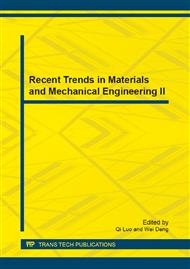p.68
p.74
p.78
p.85
p.92
p.99
p.107
p.114
p.118
A Study on the Sound-Absorbing Characteristics of Multi Air Layer
Abstract:
The air layer on the back of sound-absorbing construction affects the sound absorption coefficient. In previous studies, the single air layer is the setting condition of sound-absorbing construction, while the impact of the multi air layer on sound absorbing construction is rarely discussed. Therefore, this study used the common perforated steel plate sound-absorbing construction as the subject, with factors including steel plate perforation, number of air layers on the back of the sound-absorbing construction, and the total thickness of air layers on the backside of the sound-absorbing construction. According to the results, the sound-absorbing coefficient of a multi air layer is higher than that of a single air layer. When the number of air layers is below 4, the range of low and medium frequency is affected. When there are five air layers, the range of high and medium frequency is affected.
Info:
Periodical:
Pages:
92-98
Citation:
Online since:
September 2013
Authors:
Price:
Сopyright:
© 2013 Trans Tech Publications Ltd. All Rights Reserved
Share:
Citation:


